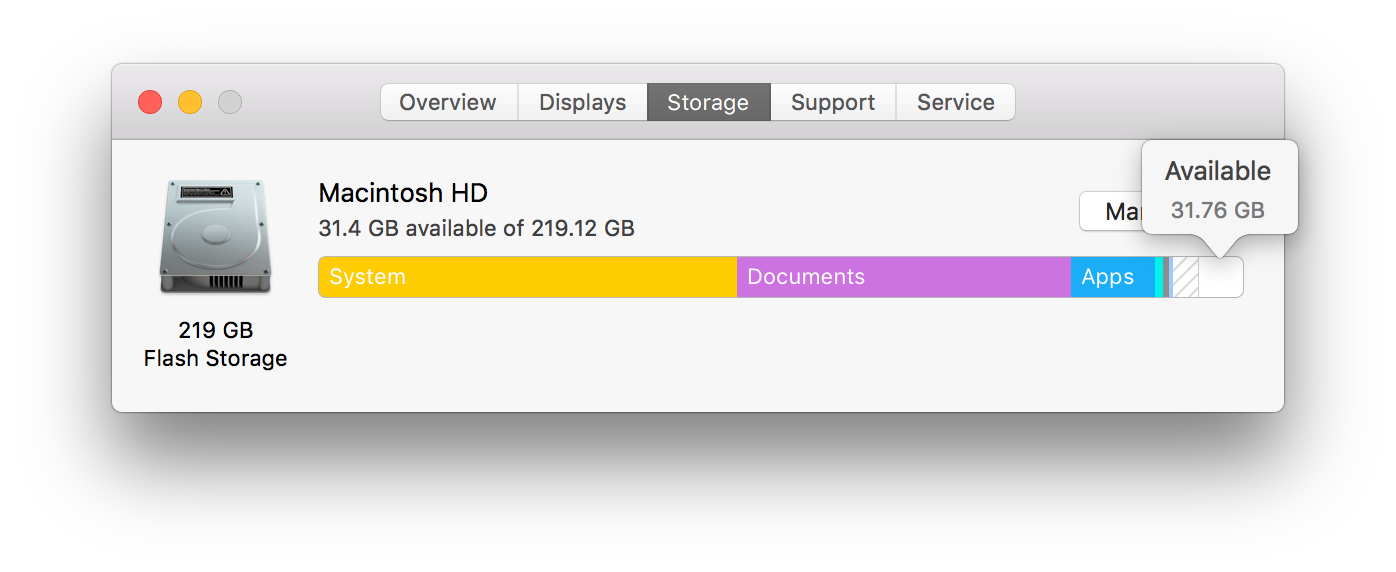About Apple File System (APFS)
It just works
Starting with macOS High Sierra, Apple introduced its new APFS file system on Macs.
APFS is a state-of-the-art file system, optimized for the now dominating solid-state drives. It’s more scalable, more reliable and more feature-rich compared to its predecessor HFS+.
The best thing about APFS is that it just works. You, as a user, will hardly notice any change after switching to APFS. (This happens by default when you install macOS High Sierra or newer on Macs with SSD drives, such as MacBooks.)
If you’re interested, here’s a deeper look on APFS features.
What’s different
Here are a few things to keep in mind when working with APFS disks and DaisyDisk:
APFS introduces snapshots — a new way to create instant snapshots of your entire disk. The snapshots are cheap and fast to create and delete, they don’t consume additional disk space. Time Machine now uses them to create its hourly local snapshots, which are the main contributor to the purgeable space.
In contrast to HFS+, APFS doesn’t delete its snapshots until really necessary. Over time, as you make changes to the data on your disk, the snapshots may pile up until 80% of disk capacity is taken. Snapshots older than 24 hours are deleted automatically.
Consequently, About This Mac > Storage may now show the System category taking too much space on macOS High Sierra.

In DaisyDisk, unlike previously, the APFS snapshots cannot be revealed by scanning as administrator. Instead, DaisyDisk provides other macro-level tools for viewing and reclaiming the purgeable space.
APFS introduces space sharing between volumes. In APFS, every physical disk is a container that can have multiple volumes inside, which share the same pool of free space. Your startup disk is also a container, and beside your data, macOS keeps some hidden system volumes there.
For this reason, in DaisyDisk, you will notice a new opaque component inside the hidden space — “other volumes”, typically a few GB.
Besides, if you create your own APFS volumes, they will be included into the “other volumes” too.

APFS introduces clones — a more fine-grained analog of hard links. The effect of using clones is that the aggregate size of a bunch of files can be smaller than the sum of the same files taken separately.
For now, macOS does not provide DaisyDisk any way to detect the APFS clones, but fortunately, their use appears to be very limited on a typical APFS disk.
Scanning an APFS disk in DaisyDisk takes somewhat longer and consumes more CPU power compared to HFS+. Hopefully, this performance issue will be optimized in future updates of APFS.